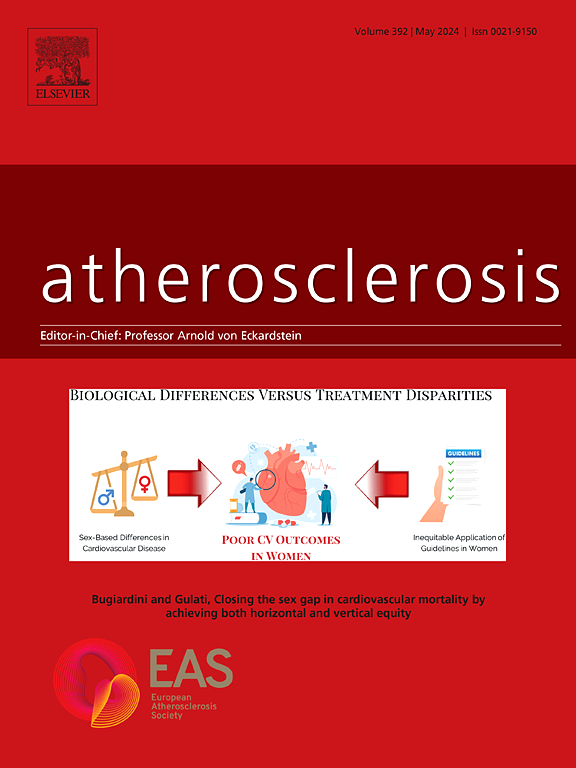Transportation noise and the cardiometabolic risk
IF 4.9
2区 医学
Q1 CARDIAC & CARDIOVASCULAR SYSTEMS
引用次数: 0
Abstract
Transportation noise is a widespread and often underestimated environmental pollutant, posing a substantial health risk particularly in urban areas. In contrast to air pollution, the health effects of noise pollution are less extensively documented. Defined as an unwanted and/or harmful sound, noise pollution affects over 20 % of the European Union (EU) population, contributing to an estimated 12,000 premature deaths and 48,000 new cases of ischemic heart disease annually.
Recent epidemiological evidence strengthens the link between transportation noise and cardiovascular disease (CVD). A 2024 Umbrella + review with subsequent meta-analyses found that road traffic noise was associated with risk of CVD, more specifically a 4.1 % higher risk for ischemic heart disease, 4.6 % for stroke, and 4.4 % for heart failure per 10 dB(A). Translational and experimental studies have investigated the biological mechanisms behind noise-induced cardiovascular damage, showing that noise impacts stress and sleep pathways. Human studies reveal that nighttime noise impairs vascular function, elevates stress hormone levels, and triggers inflammation and oxidative stress, particularly in individuals with pre-existing CVD. Animal research corroborates these findings, demonstrating that noise exposure leads to endothelial dysfunction, elevated blood pressure, and oxidative stress through mechanisms shared with traditional cardiovascular risk factors. Mitigation strategies are crucial to reducing the health impacts of environmental noise. For road traffic, transitioning to electric vehicles offers minimal noise reduction, necessitating measures such as noise-reducing asphalt, low-noise tyres, and changes in urban infrastructure, whereas for aircraft noise nighttime flight bans and optimized flight paths are important tools for reducing noise exposure. Addressing co-exposure to noise and air pollution is essential for a comprehensive approach to mitigating the environmental burden on cardiovascular health.

交通噪音和心脏代谢风险。
交通噪音是一种普遍存在但往往被低估的环境污染物,对健康构成重大威胁,尤其是在城市地区。与空气污染相比,噪音污染对健康的影响没有得到广泛的记录。噪音污染被定义为不受欢迎和/或有害的声音,影响到欧洲联盟(欧盟)20%以上的人口,每年造成约12 000人过早死亡和48 000例缺血性心脏病新病例。最近的流行病学证据加强了交通噪音与心血管疾病之间的联系。2024年的一项Umbrella +综述和随后的荟萃分析发现,道路交通噪音与心血管疾病的风险相关,更具体地说,每10分贝(A),缺血性心脏病的风险增加4.1%,中风的风险增加4.6%,心力衰竭的风险增加4.4%。转化和实验研究已经调查了噪音引起的心血管损伤背后的生物学机制,表明噪音影响压力和睡眠途径。人体研究表明,夜间噪音会损害血管功能,提高应激激素水平,并引发炎症和氧化应激,特别是在已有心血管疾病的个体中。动物研究证实了这些发现,表明噪音暴露通过与传统心血管危险因素共享的机制导致内皮功能障碍、血压升高和氧化应激。缓解战略对于减少环境噪声对健康的影响至关重要。对于道路交通,过渡到电动汽车提供最小的噪音减少,必要的措施,如降噪沥青,低噪音轮胎和城市基础设施的变化,而对于飞机噪音夜间飞行禁令和优化飞行路径是减少噪音暴露的重要工具。解决噪音和空气污染的共同暴露问题对于采取综合办法减轻心血管健康的环境负担至关重要。
本文章由计算机程序翻译,如有差异,请以英文原文为准。
求助全文
约1分钟内获得全文
求助全文
来源期刊

Atherosclerosis
医学-外周血管病
CiteScore
9.80
自引率
3.80%
发文量
1269
审稿时长
36 days
期刊介绍:
Atherosclerosis has an open access mirror journal Atherosclerosis: X, sharing the same aims and scope, editorial team, submission system and rigorous peer review.
Atherosclerosis brings together, from all sources, papers concerned with investigation on atherosclerosis, its risk factors and clinical manifestations. Atherosclerosis covers basic and translational, clinical and population research approaches to arterial and vascular biology and disease, as well as their risk factors including: disturbances of lipid and lipoprotein metabolism, diabetes and hypertension, thrombosis, and inflammation. The Editors are interested in original or review papers dealing with the pathogenesis, environmental, genetic and epigenetic basis, diagnosis or treatment of atherosclerosis and related diseases as well as their risk factors.
 求助内容:
求助内容: 应助结果提醒方式:
应助结果提醒方式:


